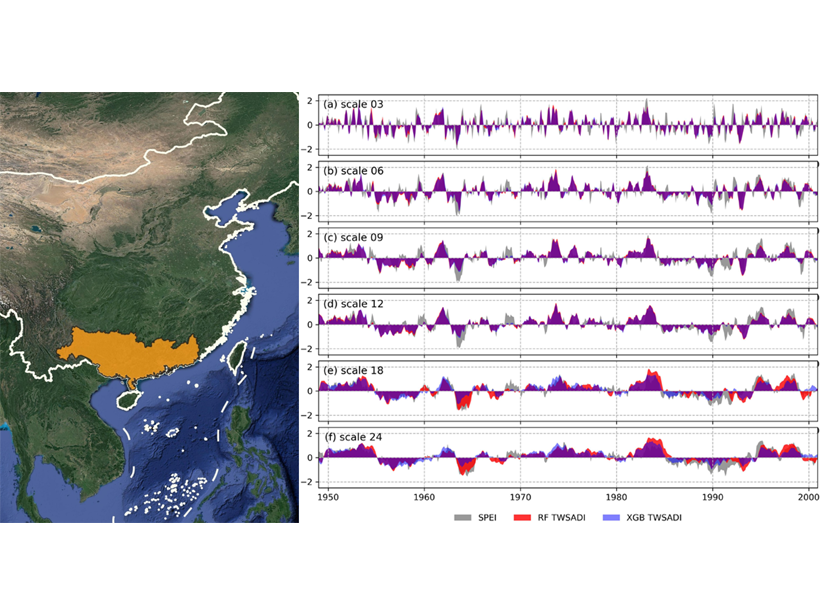Source: Earth and Space Science
Monitoring and simulating the changing patterns of freshwater storage is significant for understanding terrestrial ecosystem water cycle and making sustainable water use policies. The Gravity Recovery and Climate Experiment (GRACE) twin satellites, which launched in 2002, have revolutionized ways for monitoring change of water reservoirs on our planet by measuring Earth’s gravity field changes. Although past changes in water reservoirs (before 2002) cannot be measured by the satellites, new technical means provide possibilities for backtracking past states of terrestrial water variations by learning the current patterns.
Jing et al. [2020] present a new approach for simulating GRACE-like (i.e., learning from the GRACE satellites measured patterns) terrestrial water storage dynamics, based on climate forcing variables and two ensemble learning algorithms, the Random Forest (RF) and the eXtreme Gradient Boost (XGB).
The authors conducted a case study in the Pearl River basin, China, and the simulation outcomes match nicely with the GRACE satellites observations. By training the models with available datasets covering the 2003-2016 period, the authors reconstructed GRACE-like terrestrial water storage anomalies (TWSA) scenarios back to 1948 for the Pearl River basin. Moreover, the authors proposed a multiscaler TWSA-based drought index (TWSADI), which is comparable with the widely acceptable multiple timescale drought index, the Standardized Precipitation-Evapotranspiration Index (SPEI).
The authors compared the simulation outcomes with the SPEI time series and both models were able to successfully identify the onset, duration and magnitude of past drought and wetness in the basin. But the RF-based simulation outperformed the XGB-based simulation for reflecting durable dry/wet conditions. In addition, the authors ranked the importance of input variables to the dynamics models and found that the precipitation prior two months made the biggest contribution to the model fitness.
Results of this paper highlight the potentials for estimating terrestrial water storage dynamics by combining pure climate data and machine learning, as well as projecting future terrestrial water storage dynamics under climate change scenarios.
Citation: Jing, W., Zhao, X., Yao, L., Di, L., Yang, J., Li, Y., Guo, L., & Zhou, C. [2020]. Can terrestrial water storage dynamics be estimated from climate anomalies? Earth and Space Science, 7, e2019EA000959. https://doi.org/10.1029/2019EA000959
—Jonathan H. Jiang, Editor, Earth and Space Science
Text © 2020. The authors. CC BY-NC-ND 3.0
Except where otherwise noted, images are subject to copyright. Any reuse without express permission from the copyright owner is prohibited.

